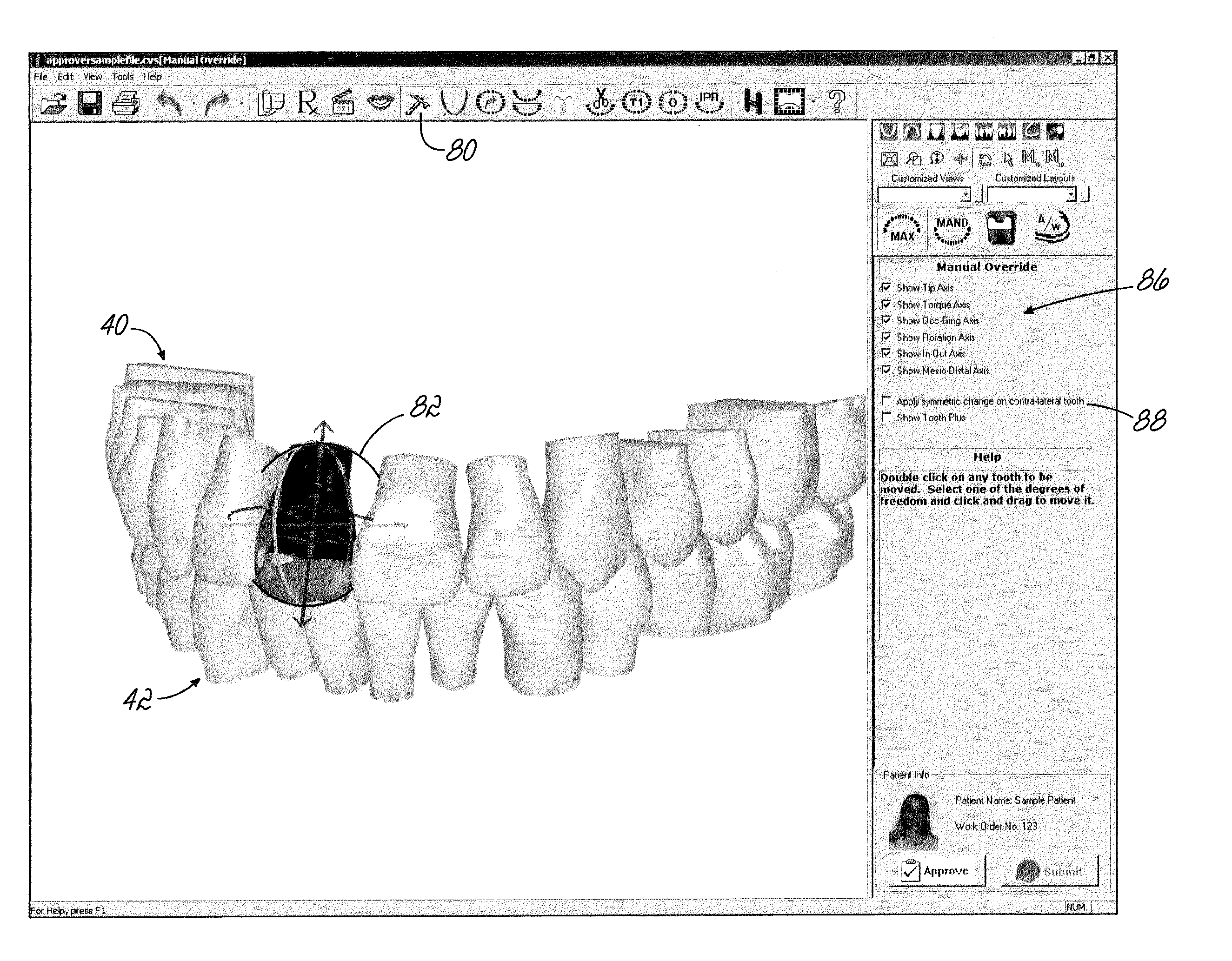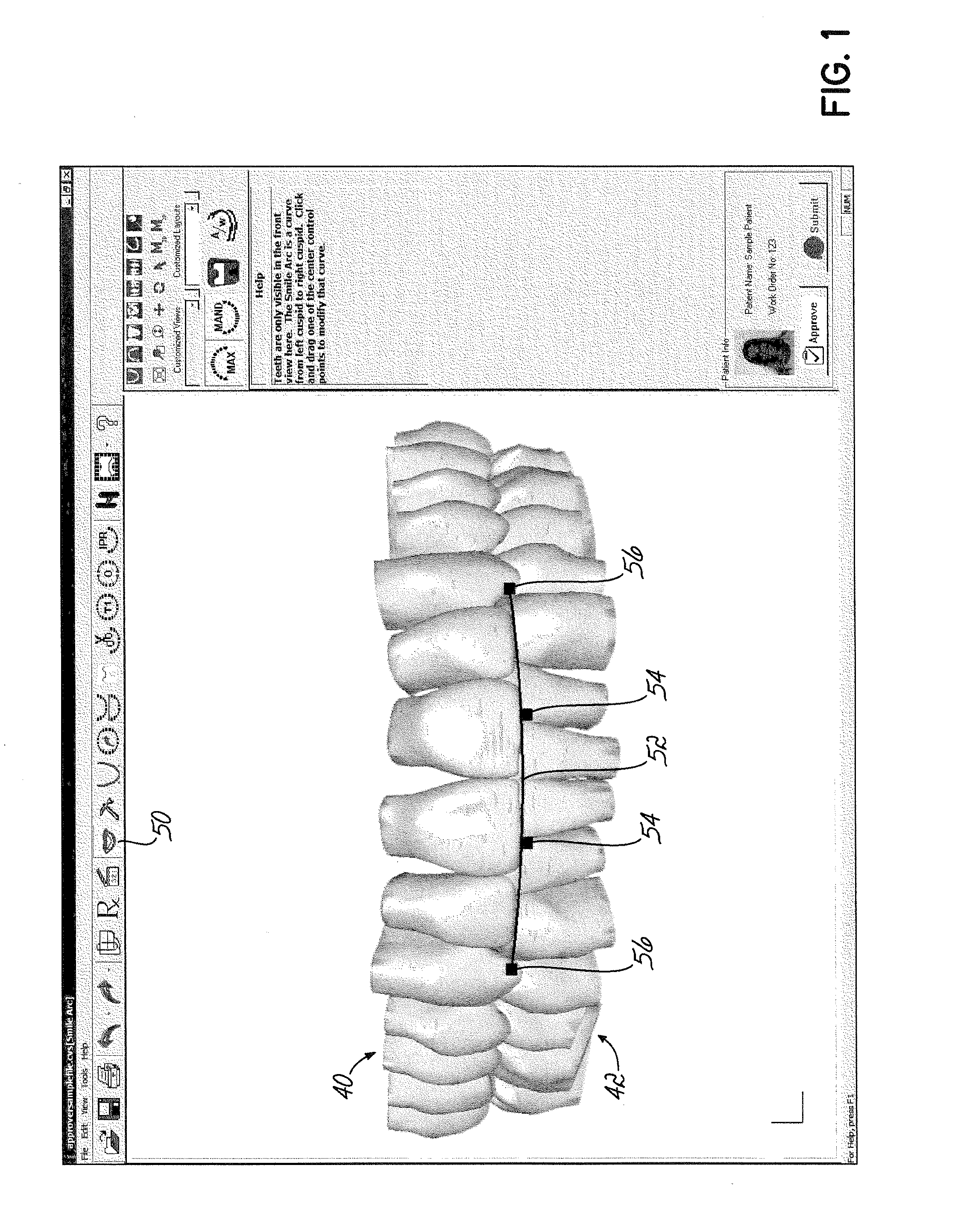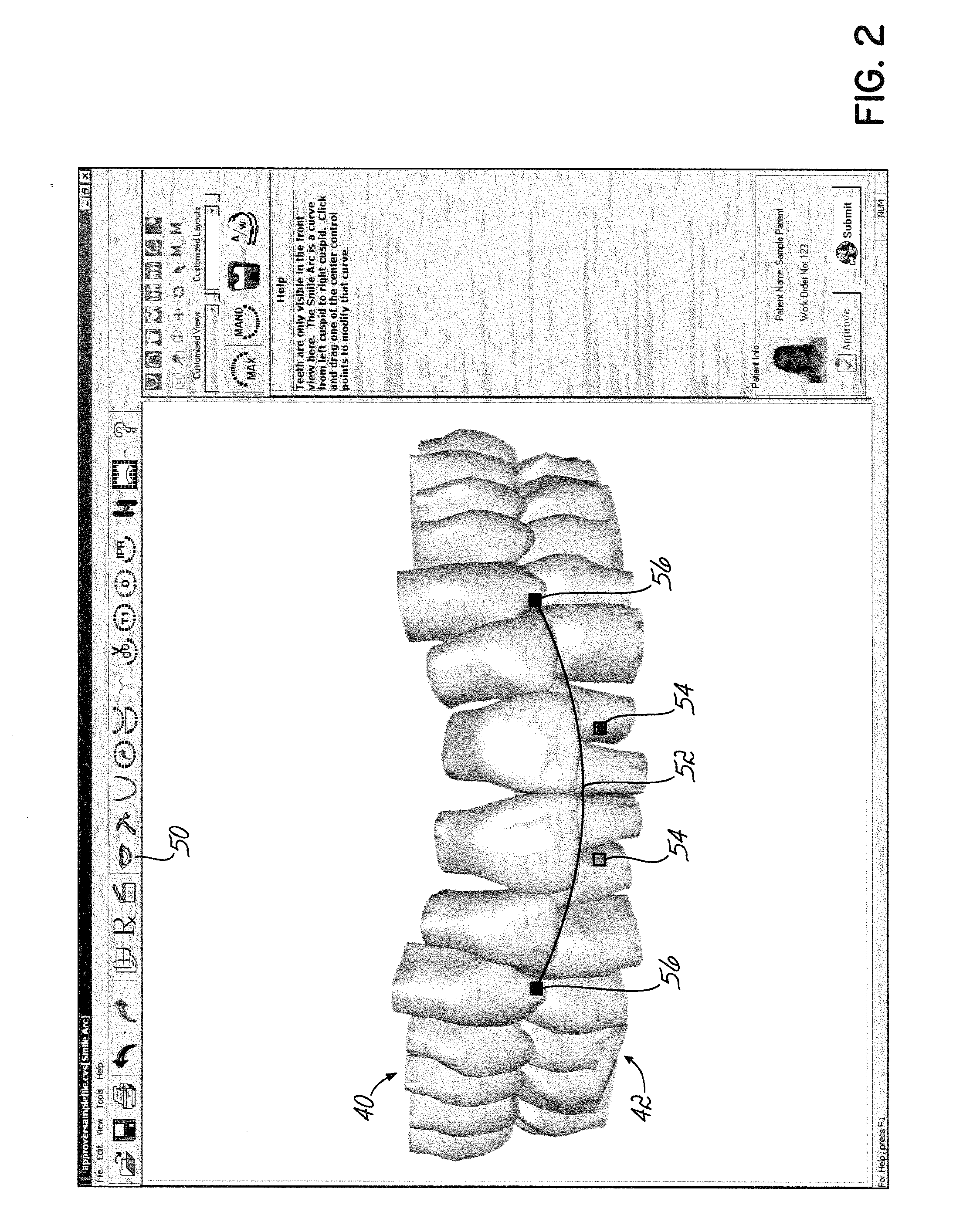Software and methods for dental treatment planning
a technology of dental treatment and software, applied in the field of orthodontics, can solve the problems of inability to see the relation between the facing surfaces of the opposite teeth of the upper and lower jaws, inability to see if the affected tooth affects the occlusion, and difficulty in achieving this goal
- Summary
- Abstract
- Description
- Claims
- Application Information
AI Technical Summary
Benefits of technology
Problems solved by technology
Method used
Image
Examples
Embodiment Construction
[0063]Systems and methods that use computers to model a patient's teeth and to design orthodontic treatment and appliances have been proposed by applicant, examples of which are disclosed in International Applications Nos. PCT / US2003 / 030917, filed on Sep. 26, 2003, and International Patent Application No. PCT / US00 / 35558, filed Dec. 29, 2000, both hereby expressly incorporated herein by reference in their entireties. Typical systems of these types provide an interface through which a treating orthodontist or others can communicate treatment and design preferences and data. The present invention provides enhancements to such systems that improve the functionality and utility of such systems, as set forth herein.
[0064]Traversing the functionality of the software containing the computer implemented method, and referring now to FIGS. 1 through 3, upon picking a Smile Arc icon 50, a user may see both the assemblies (maxillary 40 and mandibular 42) in front view along with a smile arc 52. ...
PUM
 Login to View More
Login to View More Abstract
Description
Claims
Application Information
 Login to View More
Login to View More - R&D
- Intellectual Property
- Life Sciences
- Materials
- Tech Scout
- Unparalleled Data Quality
- Higher Quality Content
- 60% Fewer Hallucinations
Browse by: Latest US Patents, China's latest patents, Technical Efficacy Thesaurus, Application Domain, Technology Topic, Popular Technical Reports.
© 2025 PatSnap. All rights reserved.Legal|Privacy policy|Modern Slavery Act Transparency Statement|Sitemap|About US| Contact US: help@patsnap.com



